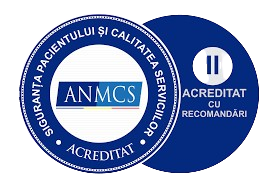Ovarian cancer - diagnostic tests
Ovarian cancer remains the leading cause of death from gynecologic cancer origin and the 4th cause of cancer death in women worldwide. In Europe, the mortality rate is between 3.6 and 9.3 / 100,000 women. If caught during the early stage, the patient has a good prognosis. Unfortunately, 70 % of cases the diagnosis is established in advanced stages when survival rate is very poor; only 10 - 30 % of these patients survive beyond 1 year.
Symptoms of ovarian cancer are related to the presence of adnexal masses and are often vague and unspecific. The main purpose of the diagnostic evaluation of such mass is to determine whether it is benign or malignant. It is estimated that in the U.S. 5 - 10 % of women will undergo a surgical procedure for a suspected ovarian cancer, which is confirmed in 13 - 21 % of cases. Since the majority of adnexal masses are benign, it is very important to be able to establish proper if a patient has an increased risk of ovarian cancer, to address an appropriate therapeutic attitude. This risk is assessed with good positive predictive value by correlation between clinical data, CA 125 (cancer antigen 125) value and ultrasound examination.
To improve risk assessment for ovarian cancer appeared two new diagnostic tests.
In September 2009, the Food and Drug Administration (FDA) has approved OVA1™ test - first blood test that, before exploratory surgery or biopsy, may help the doctor to determine whether a woman with an adnexal tumor is at risk of malignant or not, with a high sensitivity, even if radiological examination do not indicate malignancy.
The test is developed by Vermillion Inc. Company. - a molecular diagnostic company, in cooperation with the firm Quest Diagnostics - the world leader in cancer diagnosis. Ouest Diagnostics - long-term investor in research and development OVA1™ technology - holds the exclusive right to market the test for clinical reference laboratories in the U.S. for the next three years.
OVA1™ test is a qualitative in vitro diagnostic that provides an index obtained by combining the results of five immunological tests using a patented algorithm, the numerical score achieved (between 0-10) indicating the risk of malignancy. This test is indicated for women older than 18 years, which show an adnexal tumor which were scheduled for surgery and still have not addressed oncologist.
The test uses the following biomarkers :
- Transthyretin (TT or prealbumina)
- Apolipoprotein A1
- B2 - microglobulin
- Transferrin
- CA 125 (cancer antigen 125)
The test should not be used without clinical and radiological assessment and should not be recommended as a screening test.
In the approval process OVA1™ test, the FDA has assessed the results of a multicenter clinical trial, prospective, double blind, which included 27 different sites in terms of population.
Vermillion Inc. Company received Society for Gynecologic Oncologicts (SGO) prize for a poster presented at the SGO's 38th annual meeting on women's cancer in 2007 - called "Prospective independent validation of a marker panel to distinguishing benign from malignant pelvic masses". Results showed that the test correctly identified 84 % of ovarian cancers, compared with only 33 % identified by standard diagnostic methods.
In early February 2010, Abbott - global leader in vitro diagnosis - request FDA approval for a new diagnostic test useful in monitoring patients with epithelial ovarian cancer - Architect HE4 (Human Epididymal Protein 4). If will receive approval, this important immunological test will be the first automatically test of this type.
HE4 is a biomarker for detecting ovarian cancer, with a very low expression in normal ovarian tissue. In addition to expression on a cellular level, secreted HE4 has been detected in high levels in serum of ovarian cancer patients. HE4 has a sensitivity of 70-80% at a specificity of 95 - 96 % in ovarian cancer diagnosis.
Repeated determinations of HE4 and percentage increase in HE4 values have been used in monitoring progressive disease or recurrence in patients with epithelial ovarian cancer. This test should not be used as a screening test and is not recommended in monitoring patients with other types of ovarian tumors (mucinous, germ cells) - in which no growth of HE4 occurs.
Studies show that HE4 is more sensitive than CA 125; CA125 + HE4 combination is more sensitive than either marker alone, and for stage I, HE4 alone is the most sensitive marker.
Architect analyzer (Abbott) has the possibilities to perform both determinations and to estimate the risk of ovarian cancer in women, depending on the status of pre- or post-menopause, by an algorithm called ROMA = Risk of Ovarian Malignancy Algorithm, set within a multicenter clinical trial, prospective, double blind, obtaining a predictive index :
- Premenopausal - ROMA <7.4 % - low risk; >=7.4 % - high risk;
- Postmenopausal - ROMA <25.3 % - low risk; >=25.3 - high risk.

